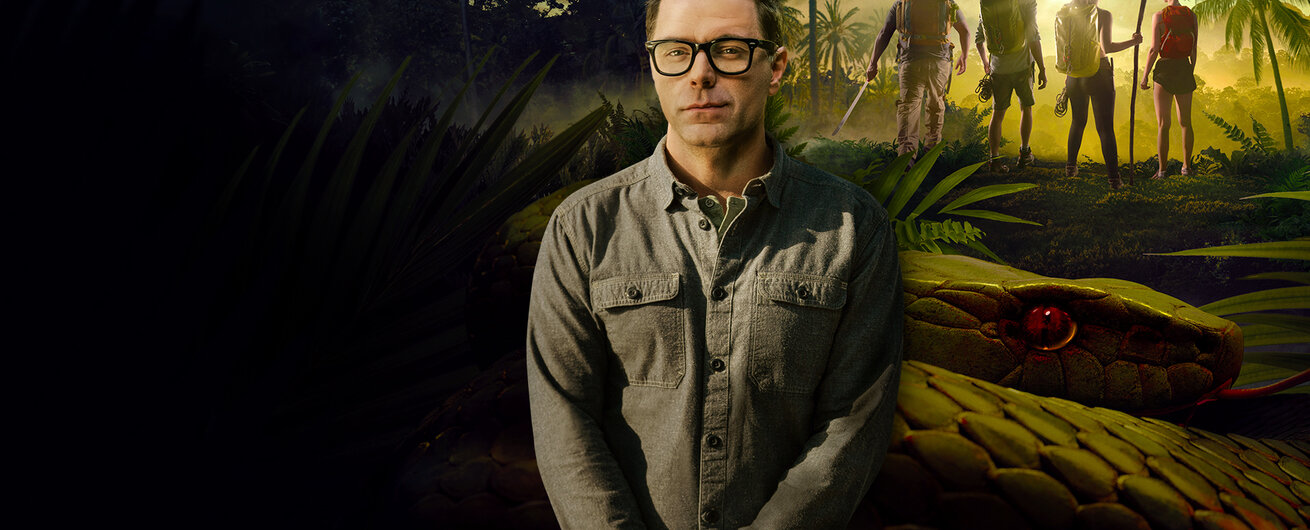Create a free profile to get unlimited access to exclusive show news, updates, and more!
What Kind Of Real-Life Snakes Are Seen On 'Snake In The Grass'?
"Snake In The Grass" is filmed in Costa Rica, which boasts a rich population of real-life snakes.

“Snake In The Grass” sends contestants to a remote part of Costa Rica to battle the elements and survive for 36 hours while they try to determine who among them is the "Snake” trying to sabotage their efforts. However, it’s worth remembering the metaphorical snake isn’t the only one they need look out for. The Costa Rican wilderness is filled with very literal snakes that could wreak havoc on the competitors.
The vast rainforest of Costa Rica makes it the perfect climate for snakes to call home. There are acres of lush forests, rich wildlife to prey to on, and, while snakes may not care, the views are fantastic. While these things make the Central American country a great tourist destination, it does mean you have to look out for the creature.
La Paz Waterfall Gardens, home to one of the country’s largest wildlife preserves, for example, notes there are roughly 137 kinds of snakes native to the area. While that number may sound daunting, it’s worth noting only 22 of those species are venomous. If that still sounds scary, there's some good news.
First of all, there are good guidelines available to follow when one either goes to a snake-heavy area or, worse yet, encounters a snake. Meanwhile, the survival rate of those bitten by venomous snakes in Costa Rica is actually pretty high. The outlet notes the area sees somewhere between 500 to 800 people bitten each year and only five to 10 result in death.
A vast majority of these bites are from the Viper family of snakes, which need roughly two to three weeks between uses to reproduce venom — so it’s entirely possible to be bitten by a venomous snake and simply have a “dry bite.” As a result, there is only a 1 percent death rate among “untreated” viper biters.
Among the 22 species of venomous snakes in the country, CostaRica.org notes there are 12 that are more common than others to see. These include the Fer De Lance, Green Vince Snake, Bird Snake, Lyre Snake, Costa Rica Coral Snake, Jumping Pit Viper, Side STripe Pit Viper, Eye Lash Viper, Godmans Montane, Neotropical Rattle Snake, Hog Nosed Pit Viper, and the infamous Bushmaster.
In case you’re wondering, non-venomous snakes most common to the country are the Boa Constrictor, Rainbow Boa, Parrot Snake, Coachwhip, Common Road Garter, King Snake, Tropical Milk Snake, Salmon Bellied Racer, and the Rat Snake.
Snakes are indeed something for tourists and especially hikers to be mindful of, but they’re also an incredibly necessary part of the rainforest’s ecosystem, says CostaRica.org. They’re also somewhat predictable. It's very easy to avoid snakes despite how plentiful they are by simply educating yourself on their behavior, according to the outlet. First of all, don’t go during the wet season as it will drastically increase your chances of seeing a snake. If you can, go with a local or seasoned hiking guide who not only knows how to spot snakes but also will likely carry tools and anti-venom to ensure everyone’s safety.
Tune into "Snake In The Grass," airing Mondays at 11 p.m. ET/PT on USA Network.



